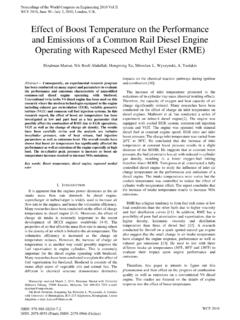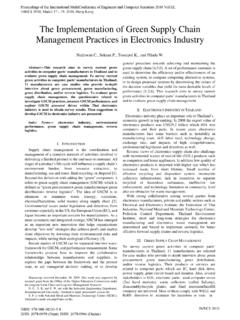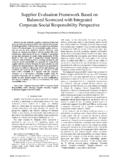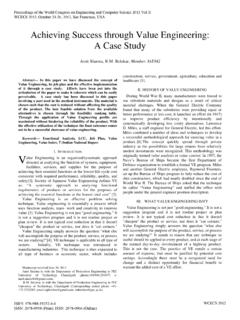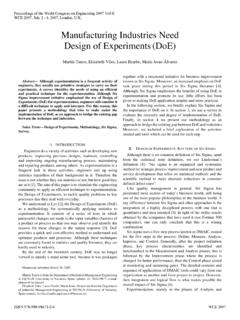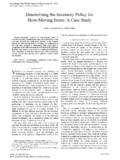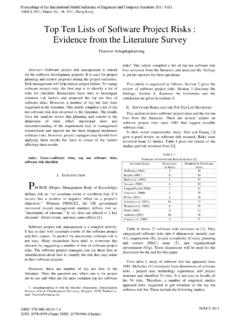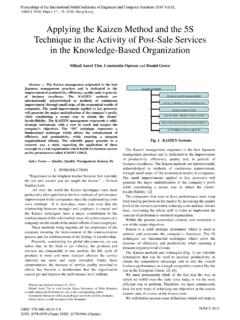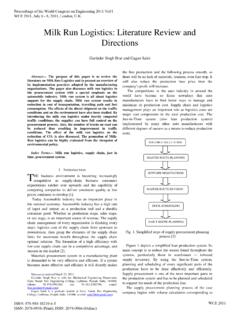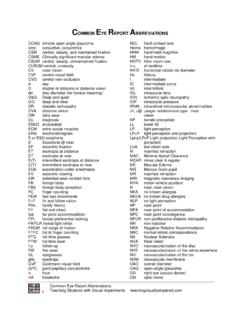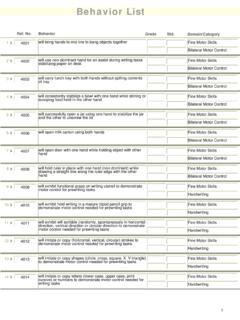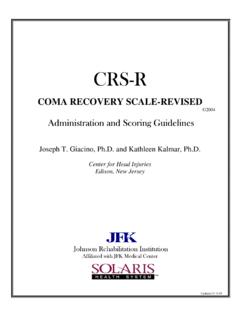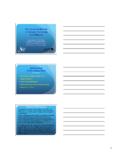Transcription of Finger Response Times to Visual, Auditory and Tactile ...
1 Abstract The purpose of this paper was to investigate Finger Response time to visual , Auditory and Tactile modality stimuli in the context of man-machine-interface. A total 94 right-handed Chinese participants (11 to 60 years old) took part in the visual , Auditory , and Tactile stimuli tests. In the visual and Auditory stimuli tests, once the visual or Auditory mode of a number was shown, the participants pressed the corresponding number on the keypad with their right or left middle Finger as soon as possible. In the Tactile stimuli test, the stimuli were produced through a vibrator that was worn on the participants right wrist or right leg near ankle.
2 Once the participants detected a vibration, they pressed the number key 8 with their right middle Finger as quickly as possible. The result showed that the time in Response to the Tactile stimuli was significantly shorter, followed by the Auditory stimuli and then the visual stimuli. The Response time of Tactile stimuli was 28% and 34% shorter than that of Auditory and visual stimuli, and the Response time of Auditory was 5% shorter than that of visual stimuli. The location of Tactile vibrator wrist and leg did not have any significant influence on Response time . Factors like age, gender, education level, time spent on computer, left/right Finger , and choice alternative, however, had significant effects on the Response time of an individual to visual and Auditory stimuli.
3 The Response time decreased with an increase of age up to the 21-30 years, and thereafter it increased gradually with an increase of age. Females were found to respond faster than males. The Response of tertiary and secondary education groups was faster than that of primary education group. Besides, the longer the time spent on computer in daily life, the shorter was the Response time . In addition, the right Finger Response time was shorter than the left Finger Response time . The Response on single-choice task was the fastest, followed by two-choice task and then four- and eight-choice tasks. The findings of this study provide a useful reference for engineers and designers to realize how the different modality channels could interfere the operators, so as to design a more user-friendly human-machine-interface.
4 Index Terms Response time , visual stimulus, Auditory stimulus, Tactile stimulus, human-machine-interface I. INTRODUCTION uman Response time can be partitioned into reaction time and movement time [1]. Reaction time refers to the Manuscript received September 1, 2011. This work was supported in part by a grant from the Research Grant Council of the Hong Kong Special Administrative Region, China (Project No. CityU 110306). Annie W. Y. Ng is with the School of Design, The Hong Kong Polytechnic University. Alan H. S. Chan is with the Department of Systems Engineering and Engineering Management, City University of Hong Kong (corresponding author.)
5 Phone: +852 34428439; fax: +852 3442 8423; e-mail: duration from onset of a signal calling for a Response until the beginning of the Response , while movement time denotes the duration from the beginning of the Response to its completion. Reaction time tasks can be distinguished according to the number of diverse stimuli in a task that need to be responded with a specific motor reaction. In case the number of stimuli is equal to one, this kind of reaction time task is called simple reaction time task; if higher than one, it is defined as choice reaction time task. The simple reaction time task is an issue when only one particular stimulus can occur and the same Response is always required, whereas there can be several different stimuli in the choice reaction time task that requires a particular Response for each stimulus.
6 There are a number of studies addressed to the topic of Response time . Research studies have been conducted to analyze the influence of different factors on human Response time such as stimulus modality, stimulus intensity, foreperiod, gender, stimulus- Response alternatives, and stimulus location [2-4]. The human-machine-interfaces nowadays not only routinely utilize the visual and Auditory stimuli modality, but also increase the use of Tactile modality. These modality input/output channels can be found in the design of driving vehicle systems, military communication system, smoke detector alarm, lighting control system, and many other industrial applications for provision of timely alert information [5-9].
7 One of the common examples of visual modality stimuli is flashing, which has long been used as a signal coding method in the marine, aviation, and road transport industries, and shown to be able to attract attention from a distance [10]. A red flashing light is an international aviation industry signal for do not land [11]. To enhance road safety for pedestrians, a crosswalk warning system with flashing lights adjacent to a marked crossing is used [12]. In addition to the use of vision, Auditory modality is widely used in transport, health care, and industrial environments as it has an immediate arousing effect [13]. Arrabito et al. [14] investigated the conveyed level of urgency of non-verbal Auditory alarms used in helicopter environments, and found that the siren-like quality sounds were judged as the most urgent.
8 The siren type of Auditory alarm was also rated more hazardous than the buzzer one [15]. Besides, Tactile modality has also been found more useful to improve the reaction time of operators in an unmanned aerial vehicle ground control station simulation [5]. The use of in-car Tactile navigation display could also result in better driver performance and reduce their workload [16]. In this paper, we investigated Finger Response time to the visual , Auditory and Tactile modality stimuli. The study was also planned to analyze the influence of age, gender, Finger Response Times to visual , Auditory and Tactile Modality Stimuli Annie Ng and Alan Chan H education level, time spent on computer, left/right Finger , choice alternative, and Tactile location on Response time .
9 The findings would provide a useful reference for engineers and designers to integrate visual , Auditory or Tactile signal into human-machine systems more effectively and efficiently. II. METHOD A. Participants A total of 94 right-handed Chinese participants (43 males and 51 females), aged between 11 and 60 years, voluntarily took part in this study. All of them were in good visual , Auditory , and physical condition at the time of the study. B. Apparatus and Stimuli An application program prepared with visual Basic and a notebook computer (ASUS Eee PC 4G) were used to generate visual , Auditory , and Tactile stimuli and to capture the participants responses.
10 The visual stimuli were dark digit numbers on a grey background presented at the centre of the 7 computer screen with 800 x 600 resolution. The Auditory stimuli were speech signals of numbers (in English) emitted from the built-in speaker. The Tactile stimuli were produced through a vibrator (Fig. 1) that was worn on the participants right wrist or right leg near ankle positions. The intensities of the stimuli were set at levels that were able to produce sufficient alerting effect for requesting responses from the participants. A USB number pad was placed at a convenient location at the front of the participants and was used to enter the corresponding Response number (Fig.)
